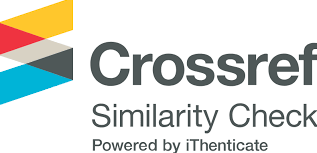The effects of sampling method and extraction method on DNA quality of Xanthocyparis vietnamensis for genetic source conservation of precious and rare forest vegetation
Keywords:
DNA extraction,, Xanthocyparis vietnamensis Farjon & N.T.Hiep,, electrophoresis, populationAbstract
Xanthocyparis vietnamensis Farjon & N.T.Hiep, an endemic plant in
Vietnam, has important ecological and commercial values. However their
regeneration density were about 0.65 seedling/mother tree, this species has
been threatened by rapid habitat destruction and overexploitation of the
forest for timber. It has been classified as a category "Critically Endan gered
(CR) species". Prior to conducting genetic studies on this critically
endangered species, it is desirable to optimise DNA extraction to limit
destructive sampling and reduce impacts on populations. In this study, a
total of 6 individuals of Callitropsis vietnamensis were sampled from 3 populations: Ha Giang province, Tuyen Quang province and Cao Bang
province (2 samples/population, including branch and leaf). Two DNA
extraction processes with four different formulas were conducted to find
out the most suitable methods. Results showed that Total genomic DNA
that was extracted using CTAB 4% (20 ml EDTA pH8, 1.5M NaCl,
100mM Tris HCl pH8, 4% CTAB, 2% PVP and 0,2% β-mercaptoethanol)
is most effective method for branch samples of Xanthocyparis vietnamensis
Farjon & N.T.Hiep
References
1. Doyle JJ. and Doyle JL., 1987. A rapid DNA isolation procedure for small quantities of fresh leaf tissue. Phytochem. Bull. 19: 11-15.
2. Farjon A., Hiệp N. T., Harder D. K., Lộc P. K., & Averyanov, L, 2002. A new genus and species in the Cupressaceae (Coniferales) from Northern Vietnam, Xanthocyparis vietnamensis. Novon 12: 179-189.
3. https://www.iucnredlist.org/species/44028/2991576.
4. Trần Huy Thái, Nguyễn Tiến Hiệp, Phùng Tuyết Hồng, Đỗ Thị Minh, 2007. Thành phần hóa học của tinh dầu Bách vàng (Xanthocyparis vietnamensis Fajon & Hiep.) ở Việt Nam. Tạp chí Sinh học, số 02: 92-94.
5. Trần Quang Diệu, La Quang Độ, Đặng Kim Vui, 2013. Nghiên cứu đặc điểm tái sinh tự nhiên của loài Bách vàng (Xanthocyparis vietnamensis Fajon & Hiep.) tại xã Ca Thành, huyện Nguyên Bình, tỉnh Cao Bằng. Tạp chí Khoa học và Công nghệ. 104 (04): 35-40.








